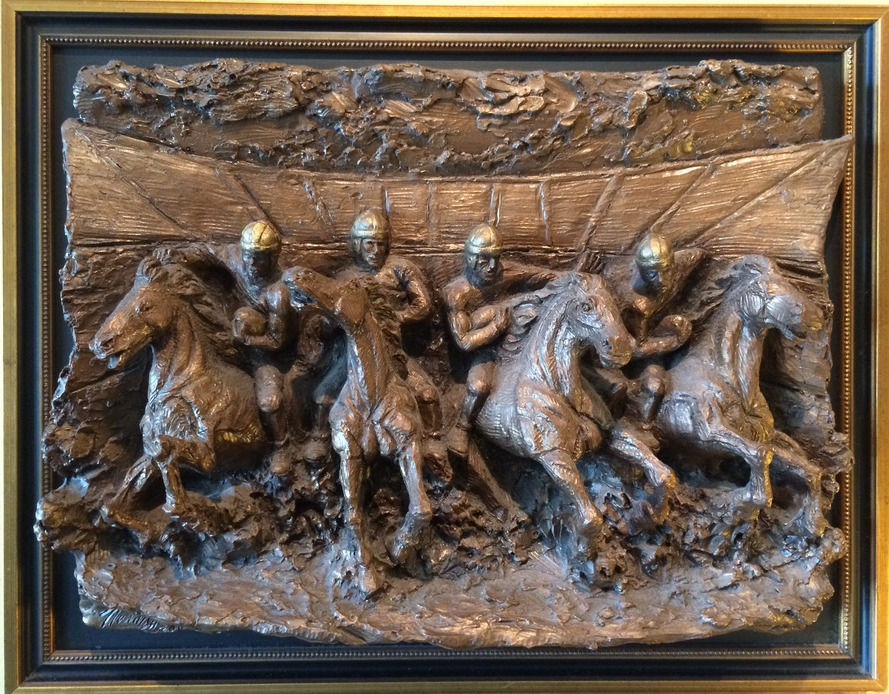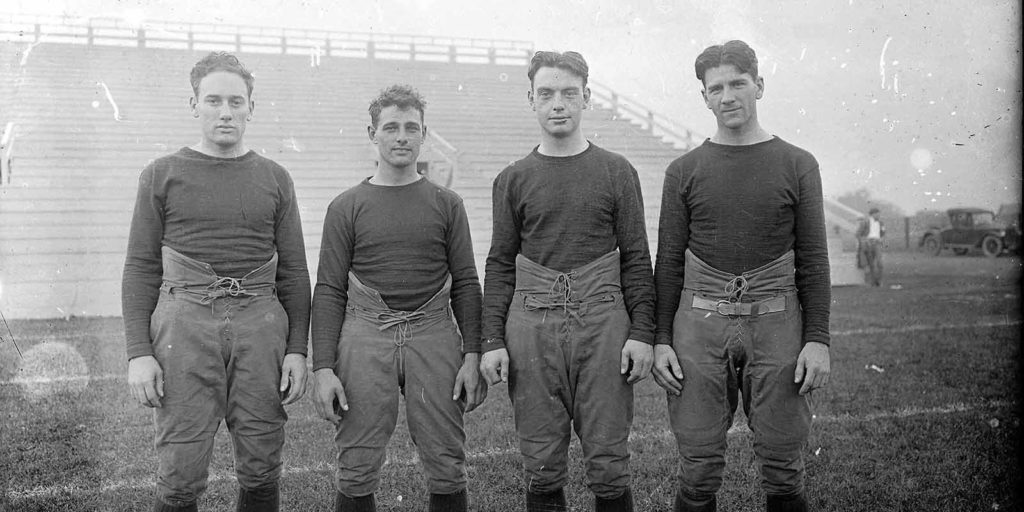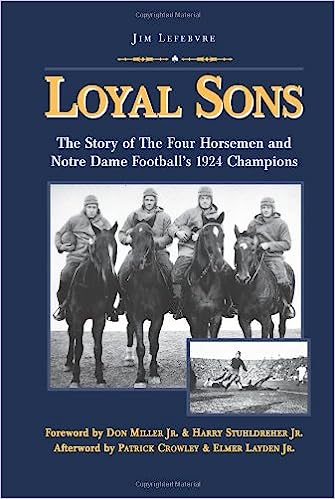The Four Horsemen: The Birth of a Legend
Under the guidance of coach Knute Rockne, the University of Notre Dame in 1924 witnessed the emergence of a group of American football players, known as The Four Horsemen. The backbone of Notre Dame’s football team that year, quartet comprised Harry Stuhldreher, Don Miller, Jim Crowley, and Elmer Layden.

Sportswriter Grantland Rice, writing for the New York Herald Tribune, bestowed this iconic moniker on the foursome, giving their exploits a touch of football immortality. His inspirations stemmed from the team’s victory over a formidable Army squad on October 18, 1924, where he penned an unforgettable lead, drawing an analogy to the Four Horsemen of the Apocalypse.
“Outlined against a blue, gray October sky the Four Horsemen rode again.”
Grantland Rice, New York Herald-Tribune
The characterization of the foursome led to George Strickler, Rockne’s student publicity aide, ingeniously capturing the essence of the name and the players. He orchestrated the iconic photo featuring the four football stars, astride four horses. Along with the raucous support of the Subway Alumni in New York, this cemented the legendary status of the Four Horsemen.

This legacy of the Four Horsemen resonates well beyond their size. They were not the biggest of players — none weighed more than 162 pounds or stood taller than six feet. Yet, their agility, skill, and cohesion saw them through thirty games, leaving an indelible mark on the history of collegiate football. Leading the way for future undersized players at Notre Dame, like Rocket Ismail, to make their mark on the college football.
Each member of the Four Horsemen brought distinct talents to the field. Stuhldreher, a skilled thrower, and blocker, was a confident leader. Crowley was a nimble ball carrier, famously known as “Sleepy Jim”. Miller was the breakaway threat, praised by Rockne as the best open-field runner he had coached. Layden, the fastest of the four, demonstrated remarkable prowess in defensive plays and punting.
The Four Horsemen’s Last Ride
Post-graduation, all four embarked on coaching careers, their paths frequently intersecting. Brief reunions on the field occurred in 1925 when they played for the Hartford Blues.
The last time the Four Horsemen wore the ND uniforms was On December 14, 1930. When a team of 24 Notre Dame All-Stars played against the New York Giants of the National Football League. Interestingly, it was also the last time Knute Rockne coached.
The exhibition game took place in front of 50,000 at the renowned Polo Grounds in New York City. In a fitting tribute to their illustrious careers, each was elected to the College Football Hall of Fame.
The Four Horsemen’s “Seven Mules”
In the wake of the Horsemen’s acclaim, Notre Dame’s linemen were affectionately nicknamed the “Seven Mules”, underscoring their vital but often overlooked contributions to the team. Two of these linemen, Adam Walsh and Edgar Miller, also earned a place in the College Football Hall of Fame. The enduring legacy of these players cements the 1924 Notre Dame team’s place in football history.

